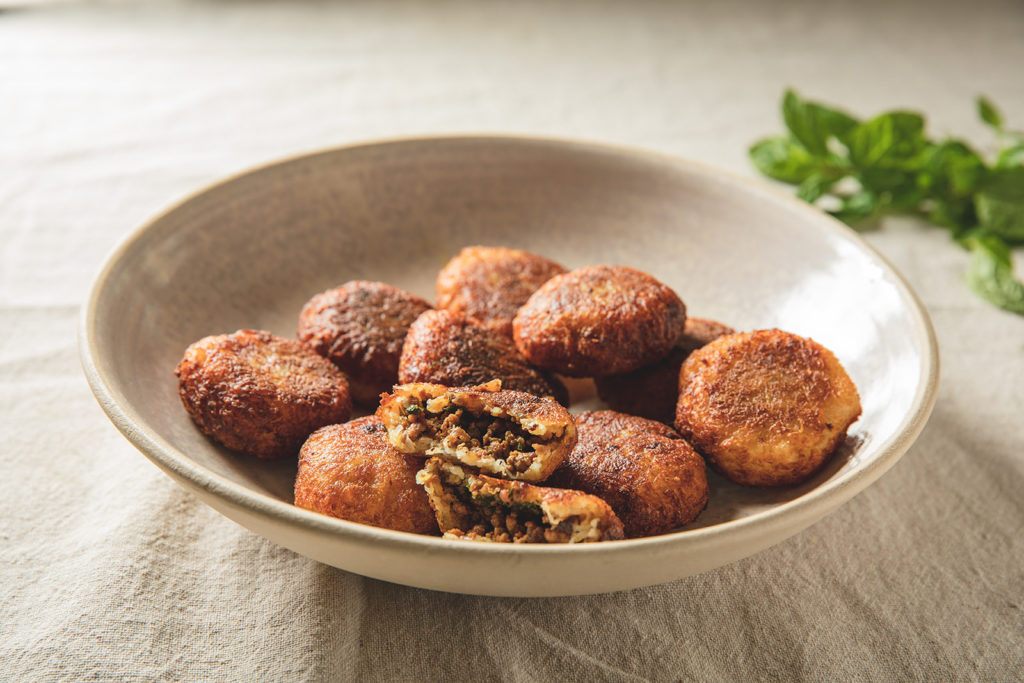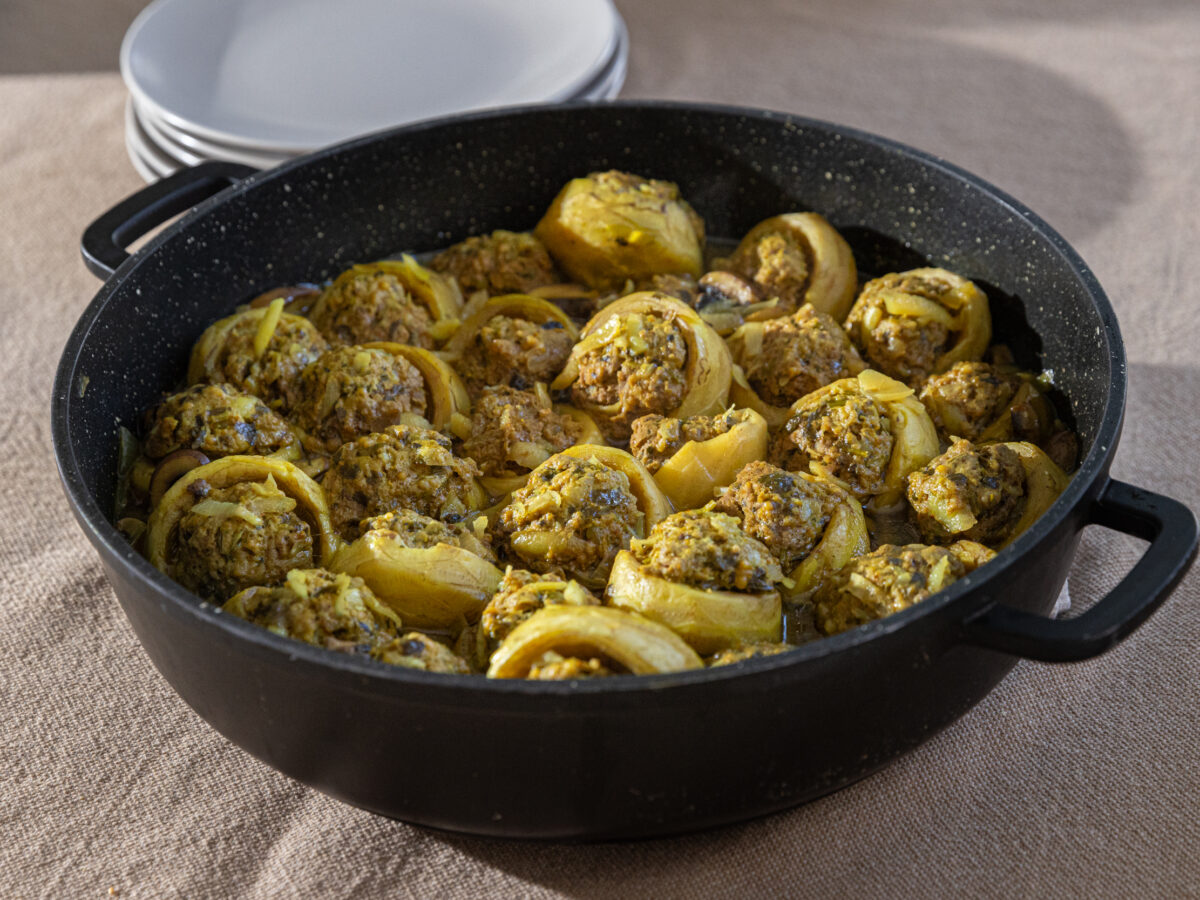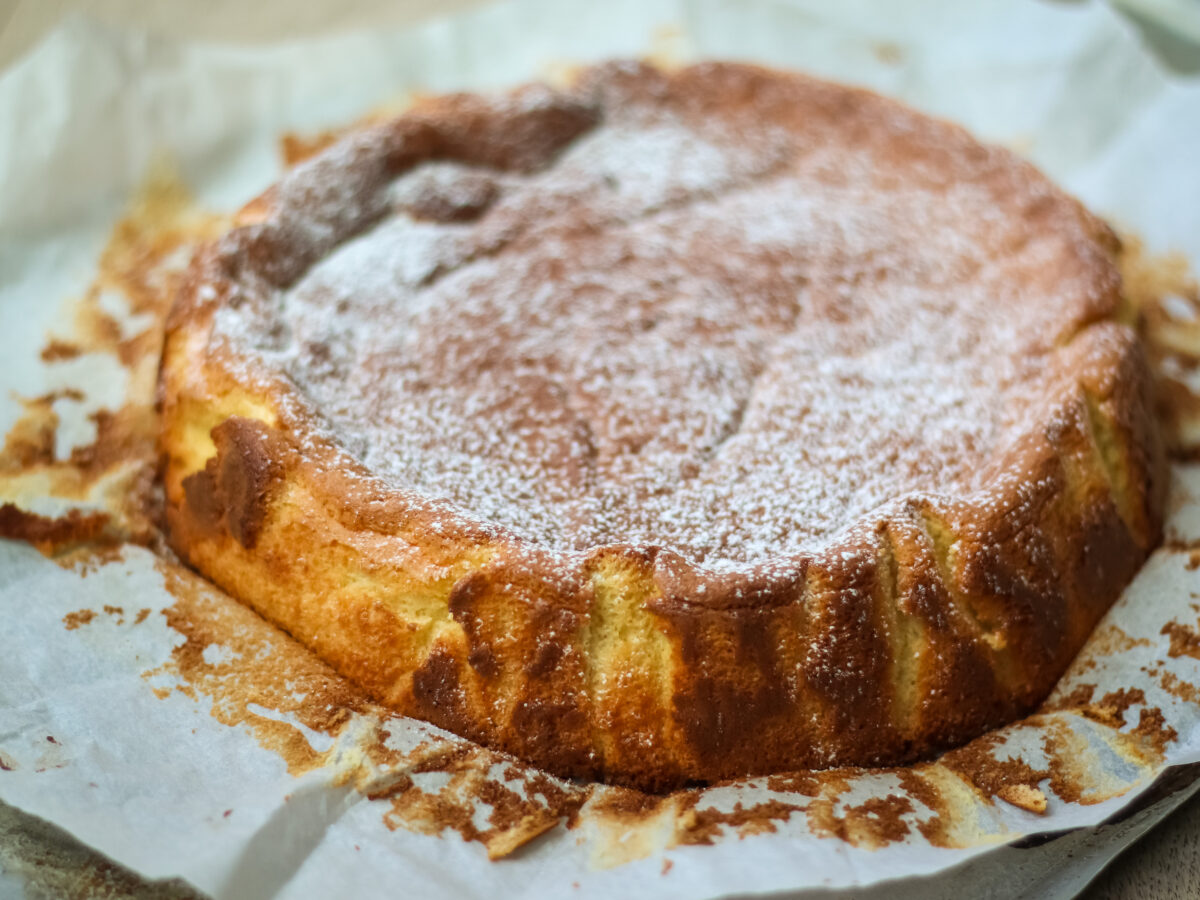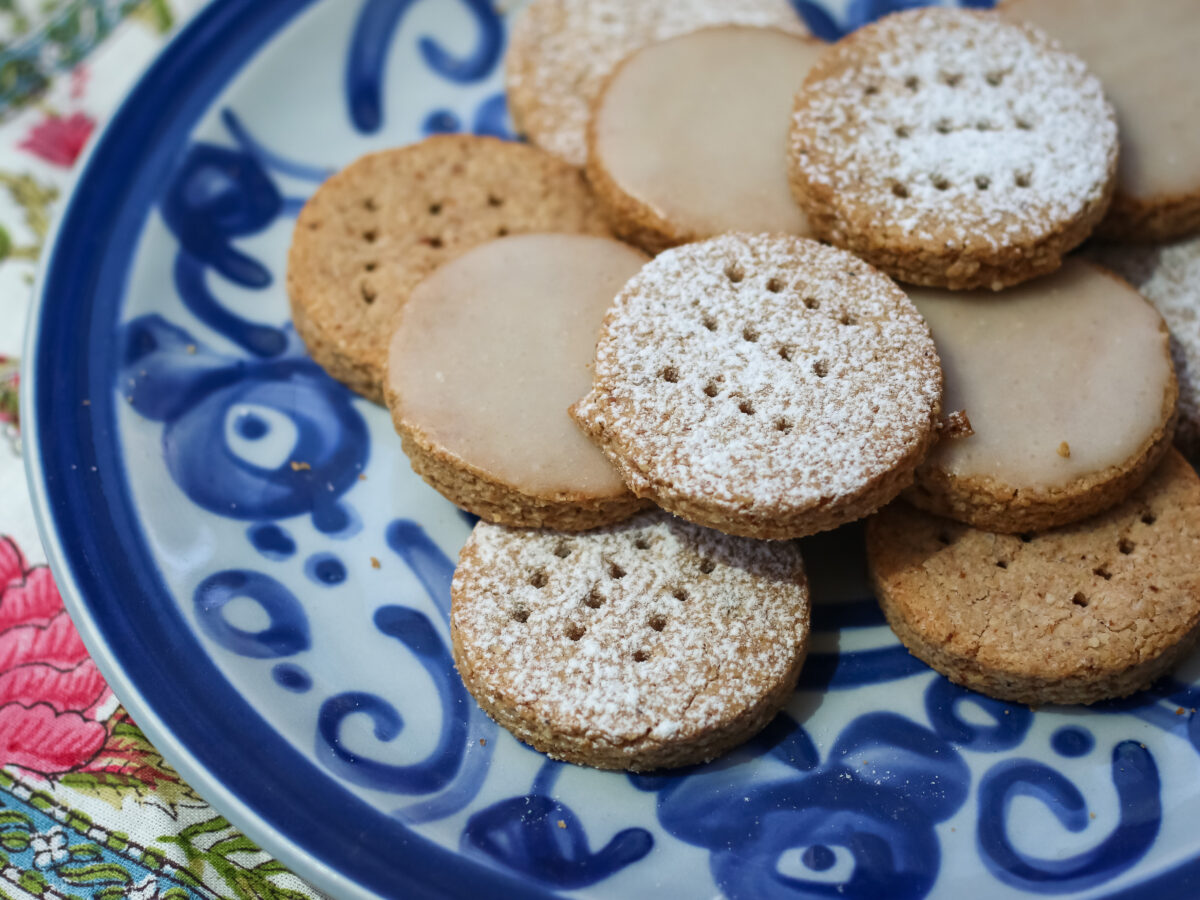
As a child, Hana Zbeida dreamt of becoming a teacher or a dancer. You can feel that in the way she conveys her recipe for potato kubbeh — her entire body articulates the cooking motions and the layers of flavor. Even the plastic film clinging to the tray turns into a graceful little dance in her hands. She is simultaneously didactic and theatrical.
Born in Basra, Iraq, Hana came from a fairly affluent home, where the family had a housekeeper who lived with them and took care of the garden and the home. Her mother ruled the kitchen and did not allow anyone enter and help her except for him. When Hana married her husband Eli, she left her parents’ house and moved with him to Baghdad. “I did not know how to make tea,” she says. “Since my mother didn’t let any of us in the kitchen, I did not know how to cook for Eli. Poor man, he had to eat potatoes all day.” One of her Jewish neighbors noticed the young bride, and soon a network of friends taught Hana how to run the house and the kitchen from A to Z. She became interested in cooking, asking questions, hoping to rediscover her roots and flavors from home. She tried and tried again until she succeeded. Today, her freezer is jam-packed with her handmade kubbeh, including her divine patata jaab.
Potatoes arrived in the Middle East during the colonial period of the 19th century, and soon became a popular commodity, replacing other carbohydrates in many traditional dishes. In some kubbeh recipes, a bulgur or rice exterior was replaced with mashed potatoes wrapped around meat and onions, creating patata jaab or kibbet batata in Arabic. It’s commonly found in Iraqi Jewish kitchens, especially during Passover, as it does not contain wheat.
Aesthetics are important to Hana, both while cooking and in the design of the finished dish. She prepares smaller kubbeh than most (“not like the big ones commonly made today, fit for an intifada”), and seasons them gently, adding her unique touch to the recipe. Kubbeh, like many traditional dishes, varies family to family as they tweak the recipe to their taste. Hana, for example, leaves out the eggs you often find in recipes for this dish.
In 1971 Hana, Eli, and their son Hani immigrated to Israel where she became an Arabic teacher, sharing her love of her mother tongue and the culture she was raised in.
Cook’s Note: This recipe produces a large quantity of kubbeh. They freeze well and can be taken out whenever guests arrive. The process of forming the dumplings becomes easier with time, but start slowly and invite a friend or loved one to join you. It makes the process all the better.
Check out more kubbeh recipes and explore the centuries-long history of this iconic regional dish here.
Ingredients
- For the filling:
- 3 tablespoons sunflower oil
- 1 large onion, finely chopped
- ½ teaspoon coarse salt
- 1 garlic clove, minced
- 1.1 lb / 500 grams coarse ground beef
- ¼ teaspoon curry powder
- ¼ teaspoon turmeric
- ⅛ teaspoon cumin
- ⅛ teaspoon ground coriander seeds
- ¼ teaspoon sweet paprika
- ⅛ teaspoon hot paprika
- Pinch of ground cardamom
- Pinch of ground cloves
- Salt and black pepper, to taste
- 1 cup parsley leaves, chopped
- ½ cup mint leaves, chopped
- 4 celery stalks, finely chopped
- For the shell:
- 8 medium-size potatoes (2 ½ lb / 1.2 kg) , peeled and halved
- 4 tablespoons cornstarch
- 3 tablespoons breadcrumbs (or matzo meal)
- Salt and black pepper, to taste
- Vegetable oil, for frying
Preparation
- Prepare the filling: Heat the oil in a pan over medium heat. Add the onion and fry until golden, about 6 minutes. Season with coarse salt, add the minced garlic, stir 1 minute and remove from the heat.
- Heat a small pot over medium heat until sizzling. Add the ground meat (without adding any oil or additional fat), and fry until the liquids have evaporated and the meat crumbles completely, stirring occasionally. Add all the dry spices and mix well.
- Add the fried onion and chopped herbs and celery, stir for 30 seconds and remove from heat. Cool.
- Prepare the dough: Meanwhile, place the potatoes in a pot, cover with water, add salt and bring to a boil. As soon as the water boils, remove from the heat, strain, and cool.
- Using only a fine side of a box grater (this is very important), grate the potatoes into a bowl. Add the breadcrumbs, cornstarch, salt and black pepper and knead well to a smooth dough. Line a tray with cling wrap. With moist hands, take a ping pong ball sized piece of dough (about 1.2 oz / 35 grams) and roll. Place on the tray and repeat with the remaining dough. Refrigerate for 20 minutes.
- Fill the kubbeh: Dip your hands in a bowl of water. Stick your thumb inside a dough ball and, using circular motions, hollow it out, gently enlarging it while keeping a thin outer layer. This takes time and practice, allow yourself a margin for trial and error.
- Fill the hollow shell with a teaspoon of filling, packing it tightly to make sure there is no trapped air inside. Repeat this until the kubbeh is full and tightly packed. Gently pinch the dough upwards and over the filling — a gentle craft (or as Hana puts it, “as gently as one would treat a woman”). Shape the kubbeh into a round slightly flattened disc and transfer to the tray.
- Repeat this with the remaining potato balls and filling. Cover the kubbeh and freeze for atleast two hours. The dumplings can also be frozen for up two two months, stored in a resealable plastic bag.
- To fry: There’s need to thaw the kubbeh before frying. Heat oil in a pan or a small pot to half the height of the kubbeh. Using a paper towel, brush off any ice crystals and gently slide the kubbeh into the hot oil. Fry on both sides until golden brown and serve. Hana recommends serving alongside a fresh fatoush salad (she fries the pita croutons in the same oil she used to fry the kubbeh).




